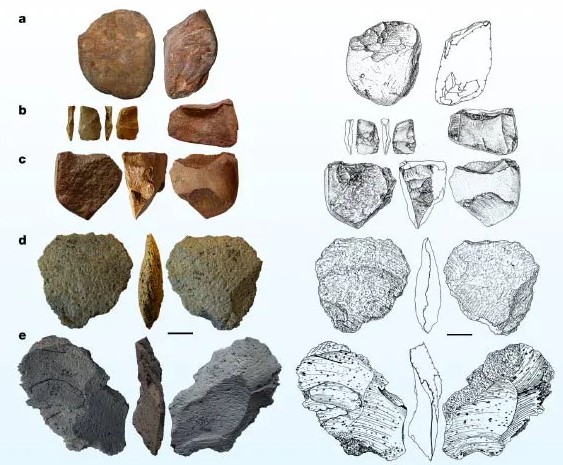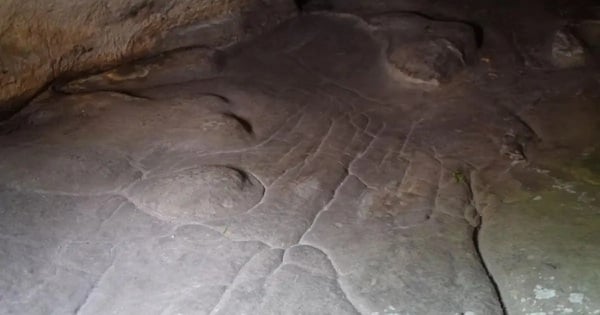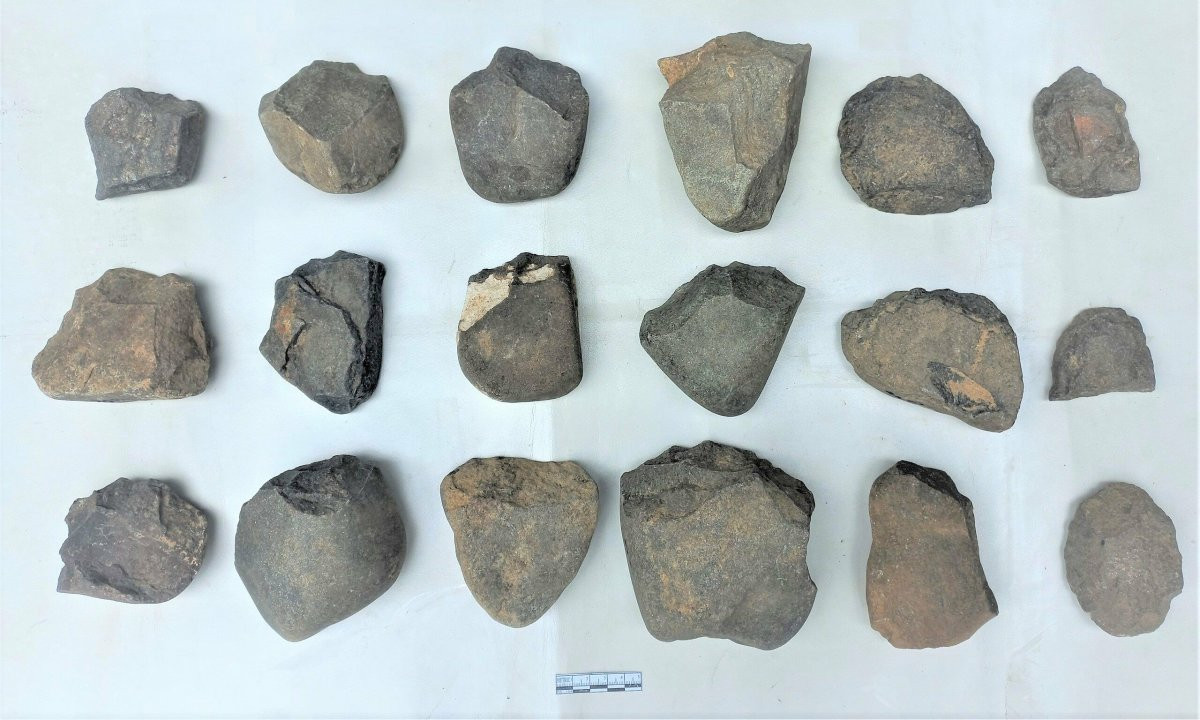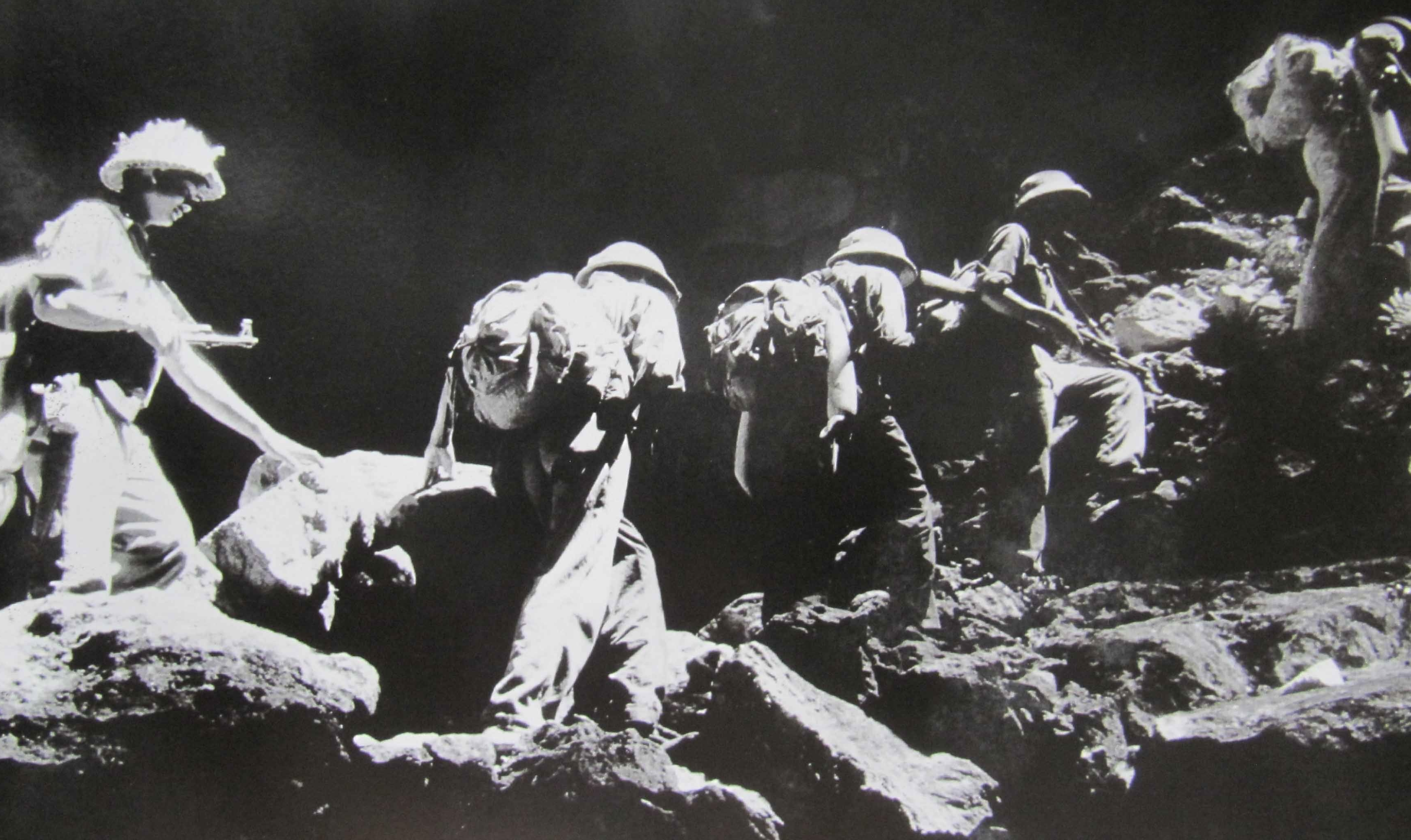The chipped stones, deliberately shaped from volcanic rock, were excavated from a quarry in the Korolevo area on the banks of the Tysa River in western Ukraine in the 1970s. Using new methods, archaeologists have dated the sedimentary rock layers surrounding the tools to be more than 1 million years old.
These strange stones, which seem to be discarded, are actually priceless archaeological treasures, as they are the earliest evidence of human presence in Europe.
“This is the earliest recorded evidence of humans in Europe,” said Mads Faurschou Knudsen, a geophysicist at Aarhus University in Denmark and co-author of the study.

Ancient stone tools unearthed in Ukraine. Photo: NATURE
It is unclear which human ancestor made these tools, he said, but it could have been Homo erectus, the first species to stand upright and use fire.
Homo erectus, an extremely special species of the genus Homo, may include more or less 10 species. We, Homo sapiens, also belong to this genus but are the youngest species, while Homo erectus may be the oldest, appearing on the planet more than 2 million years ago.
They brought many new breakthroughs to create a human world completely different from the world of their hominin predecessors. The most unique is the ability to make stone tools in an "industrial" style, that is, following a common technique, passed down through generations, gradually improving and upgrading.
“We don’t have fossils, so this is just a hypothesis,” said Roman Garba, an archaeologist at the Czech Academy of Sciences and co-author, adding that the stone tools could have been used to cut meat or scrape animal skin.
According to researchers, the tools could date back up to 1.4 million years, but some other experts believe they could be just over 1 million years old, placing them in the same age range as other ancient tools unearthed in Spain.
The oldest stone tools of this type were excavated in eastern Africa and date back 2.8 million years, said Rick Potts, director of the Smithsonian Institution’s human origins program. The site in Ukraine is significant because “it’s the oldest site in the north,” suggesting that the first people to move out of Africa with these tools may have lived in diverse environments.
“These ancient stone tool-wielding prehistoric people were able to colonise everywhere from warm Iberia (Spain) to icy Ukraine – evidence of an incredible ability to adapt,” explains Mr Potts.
This is not the first time that treasures from other human species have appeared in Korolevo.
This land contained the raw materials for Stone Age humans. Now, with a layer of loess and paleosols accumulated 14 meters deep, it promises to reveal countless interesting artifacts.
Artifacts from seven different periods have been excavated here since 1974, the most recent dating back 30,000 years, and the oldest is the newly discovered treasure.
The new study was just published in the scientific journal Nature .
Minh Hoa (reported by Nguoi Lao Dong, Tien Phong)
Source


![[Photo] Tan Son Nhat Terminal T3 - key project completed ahead of schedule](https://vstatic.vietnam.vn/vietnam/resource/IMAGE/2025/4/15/85f0ae82199548e5a30d478733f4d783)

![[Photo] National Assembly Chairman Tran Thanh Man meets with General Secretary and President of China Xi Jinping](https://vstatic.vietnam.vn/vietnam/resource/IMAGE/2025/4/14/4e8fab54da744230b54598eff0070485)
![[Photo] Prime Minister Pham Minh Chinh meets with General Secretary and President of China Xi Jinping](https://vstatic.vietnam.vn/vietnam/resource/IMAGE/2025/4/14/893f1141468a49e29fb42607a670b174)

![[Photo] Reception to welcome General Secretary and President of China Xi Jinping](https://vstatic.vietnam.vn/vietnam/resource/IMAGE/2025/4/15/ef636fe84ae24df48dcc734ac3692867)

























































































Comment (0)